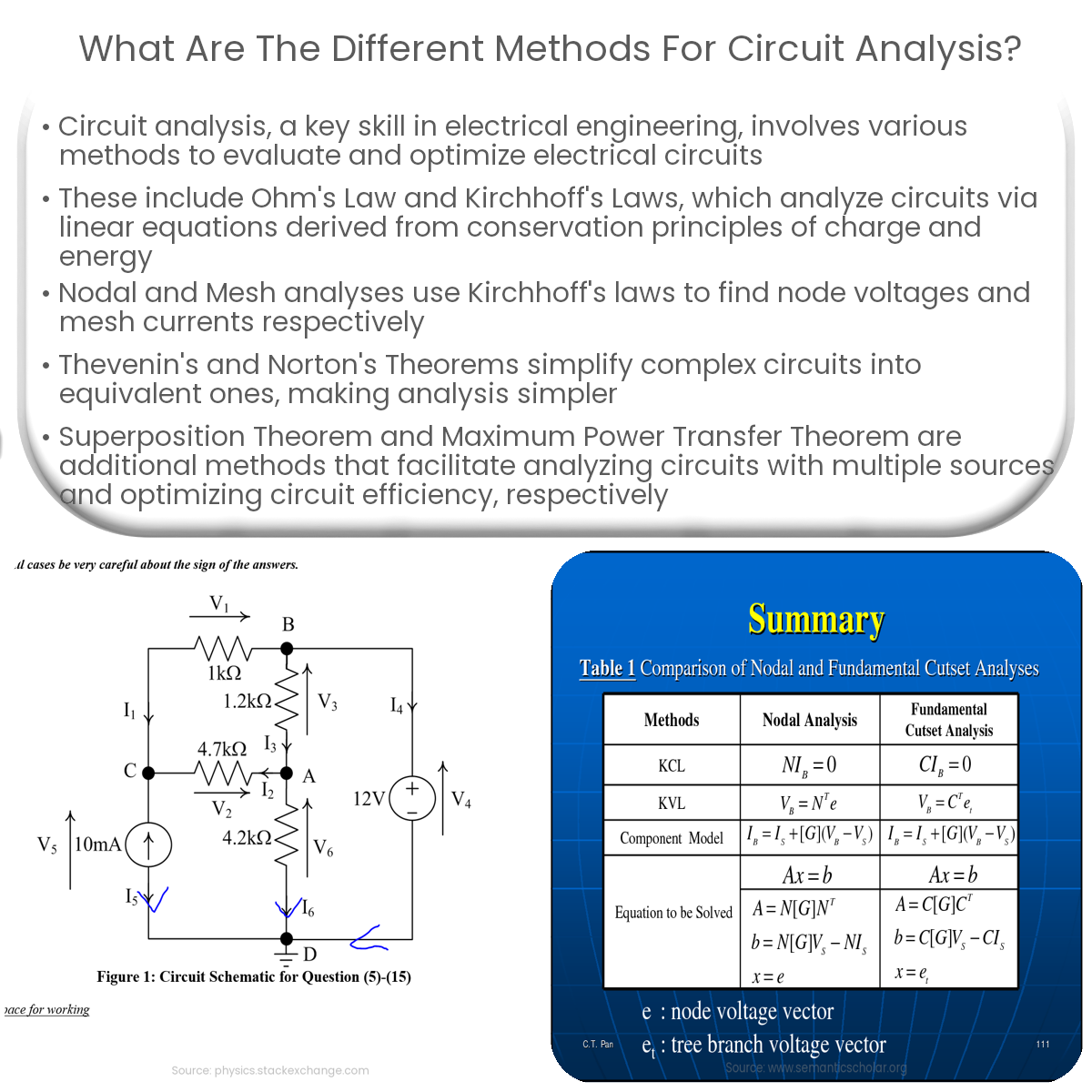Different circuit analysis methods include Ohm’s Law, Kirchhoff’s Laws, Nodal Analysis, Mesh Analysis, Thevenin’s and Norton’s Theorems, Superposition, and Maximum Power Transfer.
Introduction to Circuit Analysis Methods
Circuit analysis is a fundamental skill in electrical engineering, involving the study and evaluation of electrical circuits to better understand their behavior and optimize their performance. This article presents various methods of circuit analysis that are widely used in the industry.
1. Ohm’s Law and Kirchhoff’s Laws
Ohm’s Law states that the current through a conductor is proportional to the voltage across it, while Kirchhoff’s Laws are based on the principles of conservation of charge and energy in electrical circuits. Kirchhoff’s Voltage Law (KVL) and Kirchhoff’s Current Law (KCL) are applied to analyze circuits by creating a system of linear equations that can be solved using matrix techniques or substitution.
2. Nodal Analysis
Nodal analysis is a method that uses KCL to find node voltages in a circuit. It involves identifying all nodes, assigning a reference node, and writing KCL equations for each non-reference node. Once the node voltages are found, branch currents and other circuit parameters can be easily determined.
3. Mesh Analysis
Mesh analysis, also known as loop analysis, uses KVL to find mesh (loop) currents. It involves identifying all meshes in a circuit, assigning loop current variables, and writing KVL equations for each mesh. The resulting linear equations can be solved to obtain the mesh currents, from which branch currents and other parameters can be calculated.
4. Thevenin’s and Norton’s Theorems
- Thevenin’s Theorem: This theorem states that any linear, bilateral, and time-invariant electrical network can be replaced with an equivalent circuit consisting of a single voltage source, VThevenin, in series with a single resistor, RThevenin.
- Norton’s Theorem: Similar to Thevenin’s theorem, Norton’s theorem states that any linear, bilateral, and time-invariant network can be replaced with an equivalent circuit consisting of a single current source, INorton, in parallel with a single resistor, RNorton.
Both theorems simplify complex circuits into simpler equivalent circuits, making analysis easier.
5. Superposition Theorem
The superposition theorem states that the response of a linear, bilateral, and time-invariant circuit with multiple independent sources can be determined by analyzing the circuit for each source individually while setting all other sources to zero. The total response is then the algebraic sum of the individual responses. This method simplifies the analysis by breaking down the problem into smaller, more manageable parts.
6. Maximum Power Transfer Theorem
This theorem is used to determine the load resistance value that maximizes power transfer from a source to a load. It states that the maximum power is transferred when the load resistance is equal to the source’s internal resistance, making it a valuable tool for optimizing circuit efficiency.



